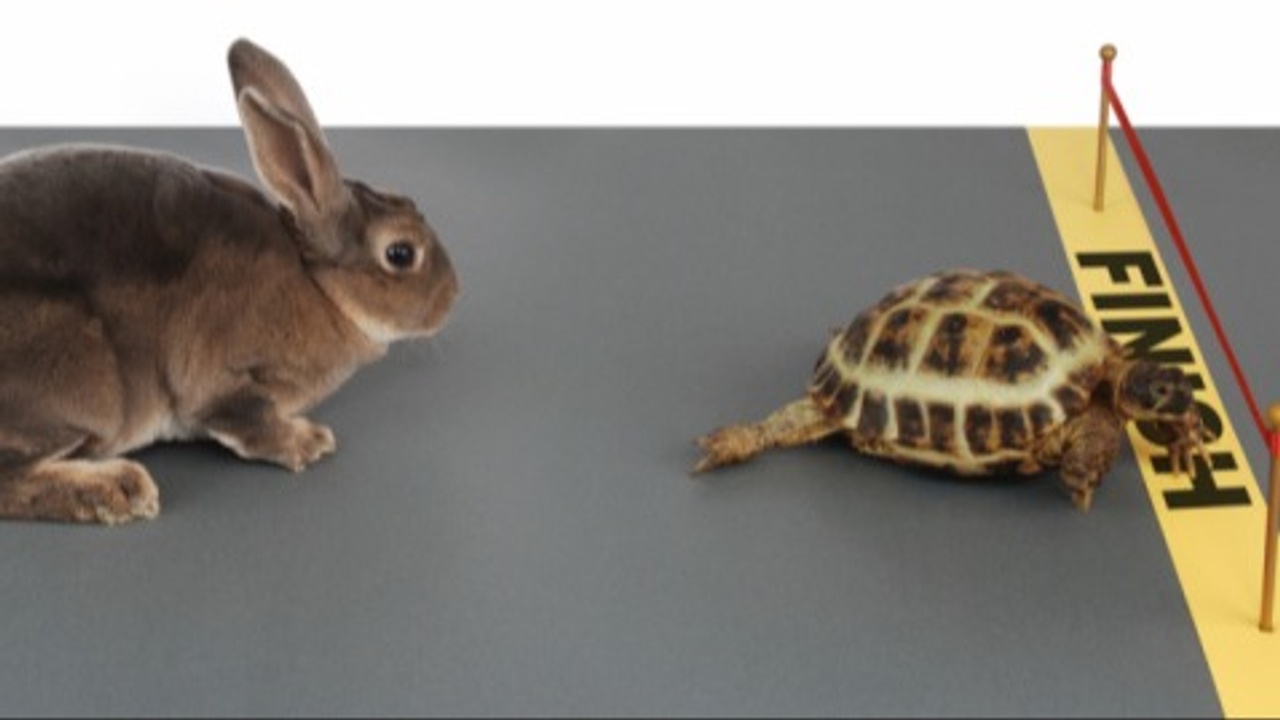Can the Tortoise and the Hare Work Together?
Aug 25, 2022
Great work is not the product of a race!
Remember the classic story of the tortoise and the hare? How the slow-moving tortoise was laughed at for challenging his speedy opponent because the hare harbored a clear advantage, or so he thought!
Today, many employees fight the tortoise effect, which entails the fear of being left behind if they do not produce swift results. Young talent feels they must be highly competitive and work at lightning speed to gain advantage in their job position with their organization.
And where there’s a tortoise, there’s a hare!
At the opposite side of the spectrum, the hare effect, this phenomenon is classified as employees who work at warp speed, typically to consciously avoid the tortoise effect. Employees working under the hare effect produce swift results, but the quality of their work suffers immensely.
When hiring employees, you probably don’t even think about who is a tortoise or a hare – but you should.
Employers looking for 5-Star Employees will base their hiring decisions on several factors such as core value alignment and company culture fit, but not much focus is put on the candidate’s potential pace of work.
While this isn’t a hot-button consideration in the hiring world, odds are most organizations have a combination of tortoises and hares working for them. They’re not just running races and taking naps under trees!
We’re all different, and work pace is a great example of a factor each that make each employee unique. Some people can knock it out of the park in record time, while others take longer to ensure success.
Make sure your 5-Star Employees feel comfortable working at the pace that affords them the opportunity to produce their best results.
As their leader, you need to respect the vast differences in pace among your employees!
Business leaders have the power to build understanding of differences in employee pace and avoid such effects. You want your employees to know you care about their results and their sanity over work speeds. This will go a long way in retaining your 5-Star Employees.
Here are some strategies employers can use to regularly check on their tortoises and hares:
Employee 1:1’s
A 1:1 meeting is a regularly occurring meeting time between the business leader (or manager) and one employee. Each employee should have a scheduled 1:1 with their supervisor on a regular basis – at least once per month, or whatever timeframe works best for your organization.
These meetings serve as a time for your employees to ask questions, update you on their work, and chat about ideas. 1:1 meetings are an ideal place to talk about the employee’s work pace and communicate your appreciation or trouble shoot with them to alter their pace.
*Important Takeaway – to show respect and that you really care about your employees and what they have to say – make sure these meetings take place as scheduled. Sure, things happen in the business world – but remember your employees are your business’s most important asset.
Operation Manuals
Your employees differ on more than their pace. Including work pace preferences or related fields in an Operations Manual is a great way to keep an employee-accessible record of each person’s preferences.
Operations Manuals are master lists of employee preferences, motivators, special skills, and even their favorite foods. Create a spreadsheet with any category you want to include and have all employees fill it out – then share with everyone.
The manuals enable your staff to learn about each other and how to work best with one another.
The climax of the tortoise and the hare story is one we all remember; the hare was too cocky and decided to take a nap before winning the race to prove just how slow his opponent was; the tortoise focused solely on the race, beating his sleeping opponent to the finish line.
All paces can be productive, and each has its place in your organization. You and your employees need to remember the race is not always won by being first to complete a project, etc.

